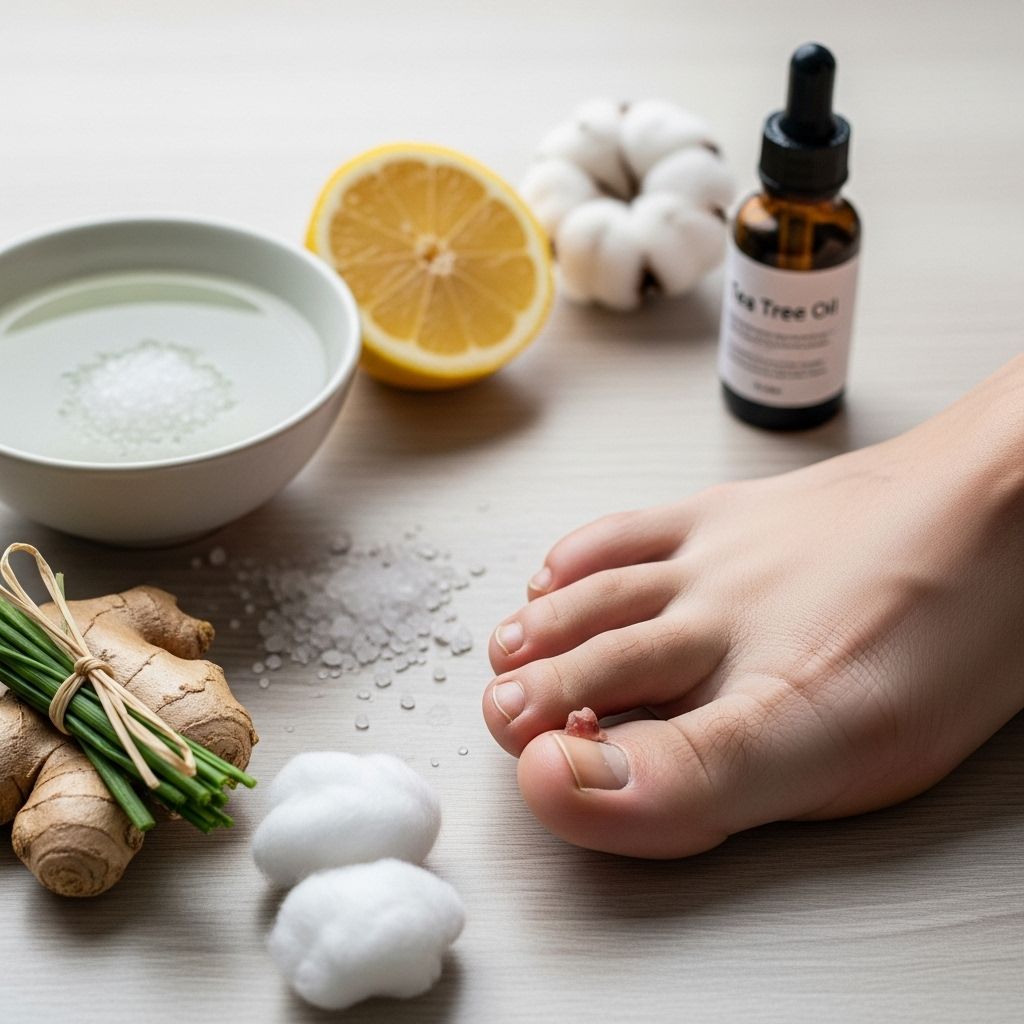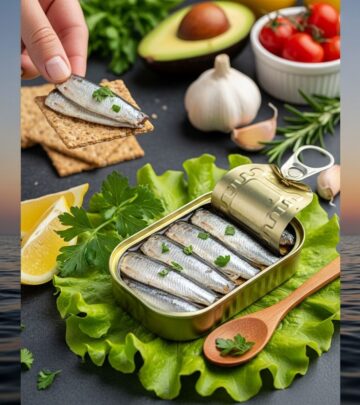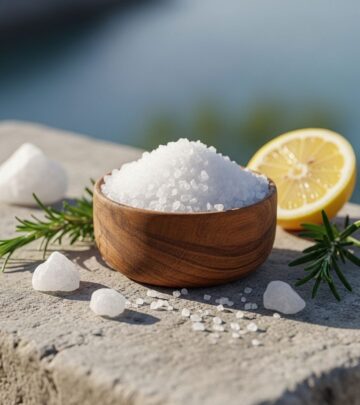Home Remedies To Relieve Ingrown Toenail Pain Naturally
Everyday solutions and gentle care restore comfort and speed up healing.

Ingrown toenails are a common, painful condition that occurs when the edge or corner of your toenail grows into the surrounding skin, leading to discomfort, redness, swelling, and sometimes infection. While severe cases may require medical attention, mild to moderate ingrown toenails often respond well to simple, natural remedies you can use at home. This guide explores practical home treatments, essential oils, natural anti-inflammatories, and effective self-care practices proven to relieve pain and support healthy recovery.
What Is An Ingrown Toenail?
An ingrown toenail (medical term: onychocryptosis) develops when one or both sides of the nail curve and dig into the soft flesh of your toe, typically affecting the big toe. Symptoms include pain, tenderness, redness, swelling, and sometimes pus if the area becomes infected.
- Most affected area: Big toe
- Main symptoms: Pain, tenderness, swelling, redness, possible infection
- Common causes: Improper nail trimming, tight shoes, injury, inherited nail shape
How To Get Rid Of Ingrown Toenail Pain Naturally
Before beginning any home remedy, thoroughly clean the affected toe with an antiseptic, antibacterial, or antifungal cleanser. Warm water can help sterilize and soothe pain prior to applying treatments.
1. Soaking Your Feet
- Fill a basin with warm water. Add Epsom salt or mild soap.
- Soak your foot for 15–20 minutes, 2–3 times per day.
- Dry the area well with a clean towel after each soak.
Benefits: Softens the skin, reduces swelling, and eases discomfort. Epsom salt further helps decrease inflammation and draws out trapped fluids.
Tip: Do not use hot water, as it can worsen inflammation.
2. Essential Oils
Essential oils offer antimicrobial and soothing effects to combat infection and inflammation.
a. Tea Tree Oil
- Apply 2-3 drops of tea tree oil directly to the ingrown nail using clean fingers or a cotton swab.
- If you have sensitive skin, dilute tea tree oil with olive or coconut oil before application.
- Repeat twice daily.
Why it works: Tea tree oil is a potent antiseptic with strong antibacterial and antifungal action, effectively inhibiting bacterial and fungal growth to protect the nail from infection.
b. Peppermint Oil
- After cleaning the affected area, pat it dry.
- Apply 2–3 drops of peppermint oil to the nail and surrounding skin.
- Use twice daily.
Why it works: Peppermint oil contains menthol, which provides soothing pain relief and antimicrobial protection.
Note: Always patch test essential oils to avoid skin reactions, especially if you have sensitive skin.
3. Antibacterial Ointments
- Apply a thin layer of antibiotic ointment (like Neosporin) to the affected toe after soaking and drying.
- Cover loosely with clean gauze or a bandage.
- Repeat after each soak or whenever changing dressings.
Why it works: Antibiotic ointments reduce bacteria on the skin, preventing infection and promoting healing.
4. Coconut Oil
- Apply a generous amount of virgin coconut oil to the ingrown toenail and surrounding skin twice daily.
Why it works: Coconut oil is rich in medium-chain fatty acids like lauric and caprylic acid, which deliver antifungal, analgesic, and anti-inflammatory benefits to soothe pain and fight infection.
5. Apple Cider Vinegar
- Dip a clean cotton ball in apple cider vinegar.
- Apply directly to the affected toenail.
- Do this twice daily.
Why it works: Apple cider vinegar’s anti-inflammatory properties help reduce swelling and pain, while its antimicrobial action guards against bacterial and fungal infections.
6. Turmeric Paste
- Mix 1 teaspoon of turmeric powder with enough water to form a paste.
- Apply to the inflamed area of the toenail.
- Cover with a sterile bandage if needed.
- Repeat 2 to 3 times daily.
Why it works: Turmeric contains curcumin, a natural anti-inflammatory, antioxidant, and antimicrobial compound that soothes pain and fights infection.
7. Lemon Juice
- Dab 1 teaspoon of freshly squeezed lemon juice onto the affected nail.
- Cover with clean gauze or a bandage overnight.
- Repeat nightly.
Why it works: Lemon’s acidity helps inhibit bacterial growth and provides mild antifungal protection for the toenail.
8. Passing Dental Floss or Cotton Under the Nail
- After soaking, gently lift the ingrown edge of the nail with a sterilized tool.
- Insert a small piece of dental floss or cotton beneath the nail to encourage it to grow above the skin.
- Change the cotton/floss daily after your soak.
Why it works: This method helps redirect nail growth away from the skin and relieve pressure.
9. Bandaging and Protection
- After applying desired remedies, loosely bandage the toe to keep it clean and prevent further trauma.
- Wear open-toed shoes or sandals to avoid pressure on the toenail.
Why it works: Proper protection speeds recovery and reduces risk of aggravation.
Additional Remedies and Tips For Ingrown Toenail Pain Relief
Warm Water Soaks With Salt or Antiseptic
- Soaking helps soften toughened skin and nail, making future trimming easier.
- Epsom salt can reduce inflammation; antiseptic soaks can curb microbial growth.
Pain Relief Measures
- Use over-the-counter pain relievers like acetaminophen or ibuprofen to reduce pain and swelling.
- Follow dosage instructions to avoid unwanted side effects.
Proper Nail Trimming Techniques
- Always trim nails straight across. Avoid rounding corners.
- Use clean, sterilized nail clippers.
- Don’t cut nails too short; leave a bit of white edge.
Why it matters: Proper trimming reduces likelihood of the nail digging into the skin again.
Advanced Protective Steps
- Choose well-fitting shoes with roomy toe boxes.
- Avoid tight socks or footwear that compress your toes.
When To Seek Medical Help
While home remedies are effective for minor ingrown toenails, seek professional care if:
- Redness and swelling worsen or persist for more than a few days.
- You notice pus, yellow/green discharge, or spreading infection.
- You have diabetes or impaired circulation.
- Severe pain makes walking difficult.
Podiatrists may prescribe oral antibiotics, perform a minor surgical procedure, or remove part of the nail for lasting relief.
Why Do Ingrown Toenails Occur?
- Poor nail cutting habits: Cutting nails too short or rounding edges invites the nail to grow into the skin.
- Tight footwear: Shoes that press against your toes push the nail into surrounding flesh.
- Toe injury: Trauma from stubbing or repetitive activity can start an ingrown nail.
- Genetics: If family members have curved nails, you’re at greater risk.
Prevention: Stop Ingrown Toenail Recurrence
- Trim nails straight across, not rounded.
- Avoid tight shoes and socks.
- Practice good foot hygiene: Wash daily, dry thoroughly, disinfect tools.
- Treat foot infections (fungal, bacterial) promptly.
- If you exercise or play sports, inspect feet regularly for early signs of trouble.
Table: Common Home Remedies For Ingrown Toenail Pain
| Remedy | Benefits | Application Frequency |
|---|---|---|
| Warm Saltwater Soak | Softens skin, reduces inflammation | 2-3 times daily |
| Tea Tree Oil | Antiseptic, antimicrobial | Twice daily |
| Peppermint Oil | Pain relief, antimicrobial | Twice daily |
| Coconut Oil | Analgesic, anti-inflammatory | Twice daily |
| Apple Cider Vinegar | Anti-inflammatory, antimicrobial | Twice daily |
| Turmeric Paste | Soothing, anti-inflammatory | 2-3 times daily |
| Lemon Juice | Antibacterial, antifungal | Once daily overnight |
Frequently Asked Questions (FAQs)
Q. Can I treat an ingrown toenail at home?
Yes, most mild to moderate cases respond well to home remedies such as soaking, applying essential oils, using antibacterial ointments, and following proper nail care.
Q. How long does it take for pain to subside with home remedies?
Improvement is usually noticed within a few days, especially if swelling and infection are mild. Severe or persistent pain should be evaluated by a healthcare provider.
Q. Are essential oils safe for all skin types?
Essential oils can cause irritation in sensitive skin, so always patch test first or dilute with carrier oils like coconut or olive oil.
Q. Should I try to cut out the ingrown part of the nail myself?
It is generally not recommended to cut deep into the nail at home. Minor clips after soaking may help, but improper cutting can worsen the condition or cause infection. Seek professional help when in doubt.
Q. What are the signs of infection I should watch out for?
Intense redness, increased swelling, heat, pus, and spreading discoloration signal infection. Seek medical attention if these appear, especially if you have chronic health conditions.
Q. Can ingrown toenails be prevented?
Yes, by trimming toenails straight across, wearing comfortable shoes, and maintaining good foot hygiene, you drastically reduce your risk of recurrence.
Key Takeaways
- Simple home remedies such as soaking, essential oils, and antibacterial ointments provide effective relief for most cases.
- Follow strict hygiene before and after treating the affected toenail to prevent infection.
- Seek medical help if symptoms worsen, don’t improve, or you have underlying health issues like diabetes.
- Proper nail care and footwear are vital to prevent future ingrown toenails.
References
- https://health.clevelandclinic.org/how-to-get-rid-of-ingrown-toenails
- https://www.stylecraze.com/articles/home-remedies-to-get-rid-of-ingrown-toenail-pain/
- https://nextcare.com/health-resources/ingrown-toenail-treatment-and-prevention/
- https://www.thepodiatrygroup.com/2023/04/28/natural-ingrown-toenail-treatments-that-actually-work/
- https://www.stylecraze.com/articles/nails/
- https://achillesfootandankle.com/how-to-prevent-ingrown-toenails/
- https://jamanetwork.com/journals/jamadermatology/fullarticle/1899244
- https://www.businessinsider.com/guides/health/ingrown-toenail
- https://msfootspecialists.com/2024/01/14/how-to-fix-an-ingrown-nail-at-home-and-when-not-to/
Read full bio of Sneha Tete










